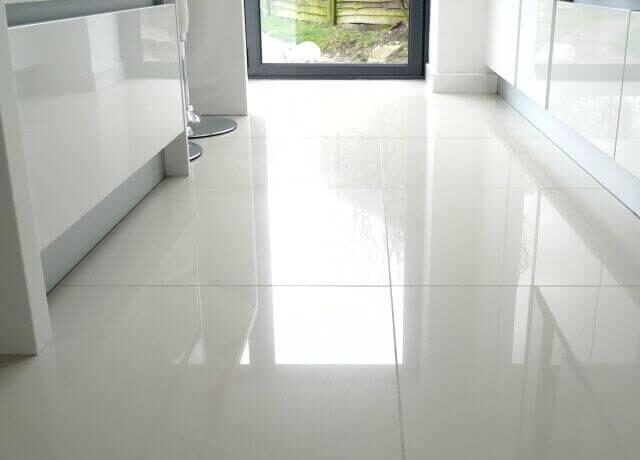Tile flooring is frequently used commercially or personally, in homes and businesses. Despite the many combinations of materials used in tile flooring, it can be completely customized toward the visual aspect or the functionality factor. Here is a quick breakdown of everything you need to know about tile flooring:
Tile can be set in large, solid pieces or in many individual pieces. In between these pieces are often grout, either sanded or unsanded, that help bind the pieces together and fill the gap in between. Types of grout is most often chosen based on look, seeing as there are varieties of colors, textures, and thicknesses to be decided upon. Lightly colored grout stains easily so darker grout is often chosen in wet areas such as bathrooms or kitchens.
The hardness of the tile used should be chosen based upon the foot traffic of the area being floored. Softer tiles, such as limestone, are more susceptible to cracking in areas where they are heavily walked upon. Tiles made of ceramic, porcelain, or certain stones will last longer and be less likely to crack or break (as long as they are installed with the proper supports underneath). Harder tiles will have a smoother, harder finish, giving a very uniform and often formal look. On the contrary, hard tiles are slippery when wet while soft tiles typically have a rougher surface making them have a little more traction.
Stone tiles have more variation in color and thickness within each tile, which gives every floor a unique design. They must be polished and sealed in order to be completely installed and finished. This requires a bit more maintenance than some other tile floors but will typically last longer.
Ceramic or porcelain tiles are man-made, fired, and then cut to create individual pieces. These can come in many different colors and sizes. They can be finished and sealed to create a more stain resistant surface or left unfinished to create a more natural look.
Smaller tiles can be laid in combinations to create patterns called mosaics. Some of the more intricate mosaics can create full portraits or images entirely made of varying tile. Mosaics can also be used to have increased traction, created by the grout, when using tiles that can be slippery when wet. The increased amount of grout due to the increased number of tiles creates more grip.
More commonly seen in businesses and commercial areas, sometimes rubber, plastic or “hard flooring” can be used in tile floors. Rubber provides a slight cushioned feel, making it appropriate for gyms, dance studios, or workshops. Plastic tiles can be applied with or without adhesive to the flooring beneath, and provide more relief from wetness, grease or changes due to heavy foot traffic. The tiles interlock piece by piece without any grout or gaps in between. “Hard flooring” is similar to a mosaic in the fact that it has a variety of sizes, colors, and materials mixed together, but it is done in large solid pieces and has a completely smooth and glossy finish. This is most often seen in older school and office buildings. Upon close examination, you can see the individual pieces but most of the material usually consists of cement, and concrete until finished and sealed.
This guide is meant as a quick overview of tile flooring and its uses and styles. It is unique and very different to other types of flooring such as Policrete polished concrete. Please add here where the red arrow is pointing. ThanksOf course, there is always more to learn but with what has been described here, you should be able to have a good start on your flooring decisions.







